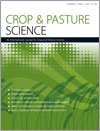Adzuki bean germplasm was introduced to Australia from China as part of a program to develop better adapted varieties for the Australian sub-tropics than the current standard varieties derived from Japan, and to develop an export industry targeting Japan. Since adzuki was a new crop in Australia, the key questions were whether suitably adapted genotypes could be obtained from China, and whether these were higher yielding than the Japanese derived local standards and of acceptable seed quality.
A geographically stratified core collection of adzuki bean (Vigna angularis) landraces from China was field evaluated for agronomic and phenologic traits at sites in China in a related study, and also at Hermitage Research Station, Queensland, in the main target region for adzuki cultivation in Australia.
A relationship was found between the regional patterns of adaptation in the core collection grown in China and yield performance at Hermitage. In particular, the late maturing gene pool which originated from South China had the greatest yield at the lower latitude location in Australia, and a gene pool from central China combined both high yield and acceptable seed quality. These lines from China were superior in yield to the local standards, and many also had suitable seed quality for the Japanese market.
In further screening of these selections from Hermitage, they were also superior in yield to the local standards in central Queensland, but not in central New South Wales.
The breeding of higher yielding varieties for Queensland with suitable quality for the Japanese market is suggested, both by direct releases of identified Chinese accessions and by further crossing of the medium and late maturing superior selections from China with the local standard varieties Erimo and Bloodwood, which have the large red seed desired in Japan.
For New South Wales, one accession from China was comparable to the local checks and appears useful for gene pool diversification, however a separate introductory screening evaluation of Chinese germplasm in New South Wales is suggested to better identify promising accessions with phenology suited to the more temperate latitudes.
Thus characterisation of genetic diversity for adaptation can assist with the introduction of germplasm for a new crop. The diversity in the adzuki germplasm from China provided the needed phenologic flexibility for introduction of the crop to southern Queensland, with superior yield to the standard varieties from Japan and acceptable seed quality.





